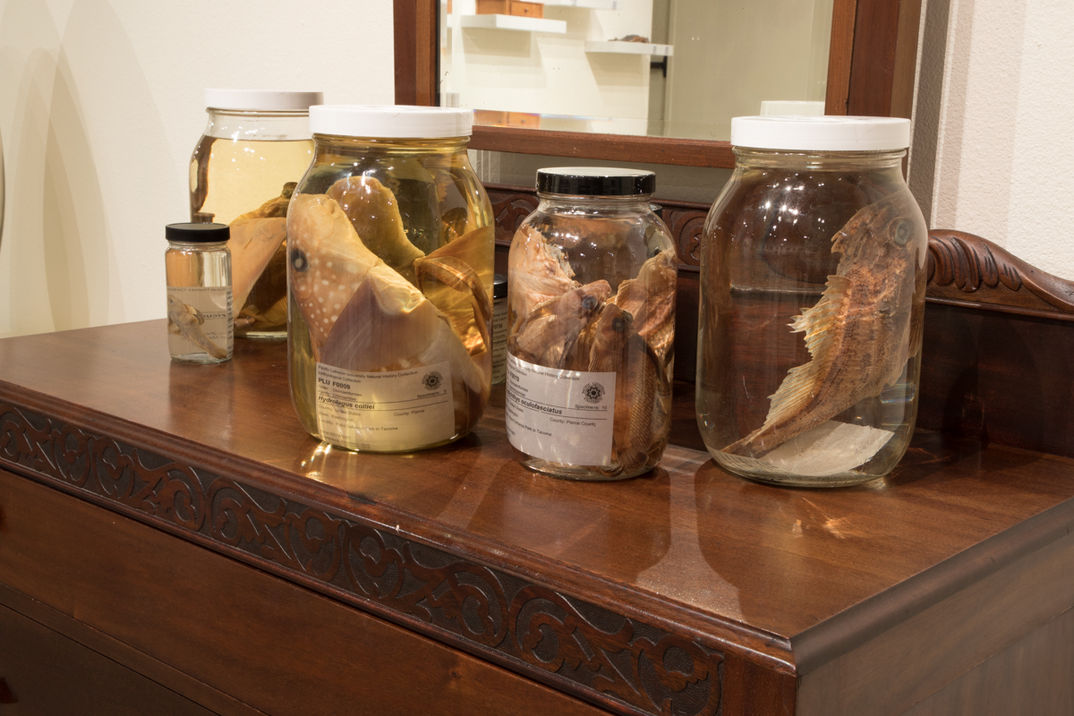
VANITY
VANITY
Vanitas vanitatum omnia vanitas. Vanity of vanities; all is vanity. – Eccl. 1:2; 12:8
Epargyreus zestos oberon ... Neofelis nebulosa ... Noturus trautmani. Give breath to those words and you will discover the makings of great poetry apropos of the seemingly fantastical fauna ever to fly, walk, or swim on Earth. But these species, precisely described by these Latin names, breathe no more. They are extinct—the flame of life that animated their bodies has been extinguished forever, and the Earth—as a body itself—is flickering and smoldering to a similar fate.
In the arts, vanitas is a special designation given to works that symbolically remind us of the fragility and evanescence of life. Life exists in ictu oculi—in the blink of an eye—and these types of works make visible the fear that we are not exceptional in this regard, simply the current, breathing survivors of an ongoing catastrophe.
Vanity by Pacific Northwest artist Joseph Rossano is an installation that passionately addresses these issues head-on in the great art historical tradition of vanitas, but with a decidedly 21st-century version of ut translatio natura—nature as metaphor.
Eleven extinct species are represented here in various ways: sculpturally in specimen jars; as drawings in the Naturalist’s tradition; historically in scientific descriptions linked through QR codes; and obscured by man’s DNA sequences. It is as though we could reconstruct each species with all the information provided, but Rossano complicates this act of mental remediation—his clear glass sculptures submerged in oil are almost imperceptible, and we are only given a clouded glimpse of the portraits of these species. What we can best see is ourselves reflected in the mirrored glass sculpture below the cabinets reminding us that this is our vanity, literally and figuratively.
Rossano and Museum of Glass Hot Shop Team have become implicit in Vanity’s telling. One of the most wondrous aspects of glass-making is that the resulting forms can be considered the artist’s breath embodied—as if all the artist is, knows, and cares about emanates from their very being and is made solid. Rossano includes glass as a medium because, “like our environment, glass is transparent, fragile and reflective—transparent in that it hides nothing, fragile in that once damaged it may never be repaired, and reflective of how we have impacted it.” Rossano’s work is both an opportunity for contemplation and a call to action.
As you interact with Vanity, reflect on these eleven species lost forever and your own relationship with the environment; give breath to their specific stories, share your experiences with others; and begin to make transparent ways we all can become better stewards of our fragile planet.










